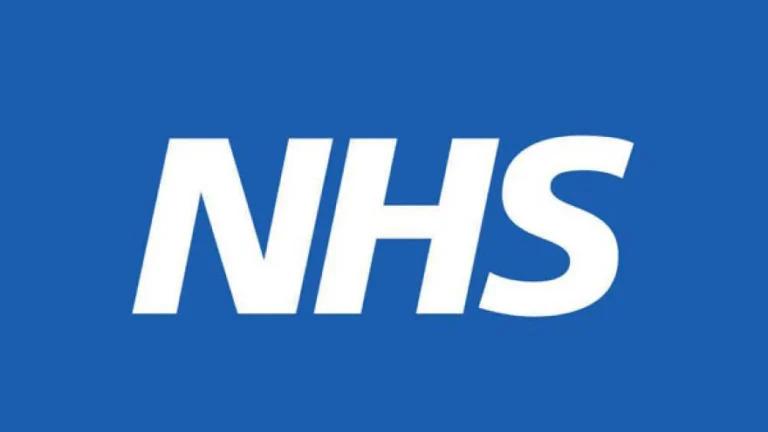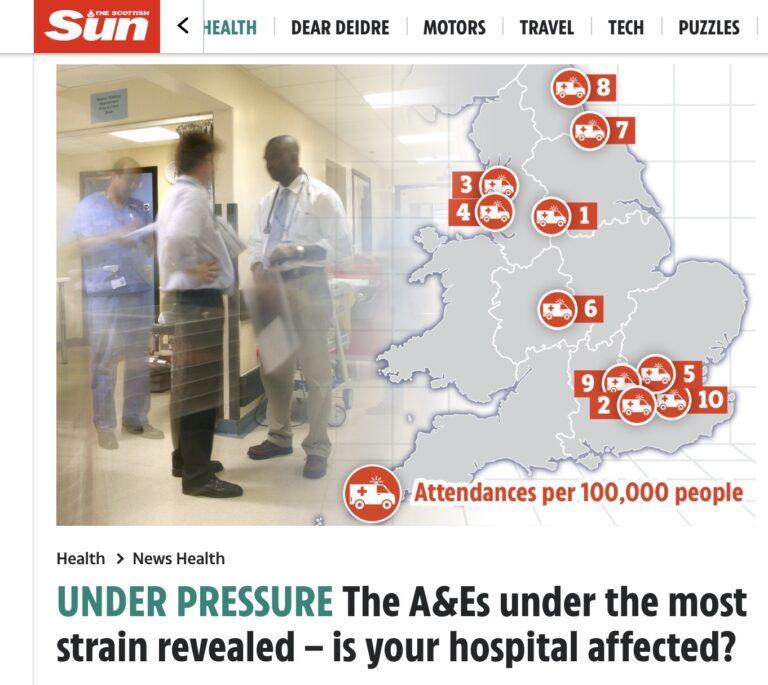In this comprehensive guide, we will explore the cost of an A&E visit to the National Health Service (NHS) in England. A trip to the Accident and Emergency (A&E) department can vary in terms of cost, depending on the type of facility visited and the type and level of NHS service received. We will delve into the specific costs associated with different types of A&E visits, the factors that influence the cost of an operation, and the overall budget and expenditure of the NHS. Let’s dive in!
Understanding the NHS Budget and Expenditure
The NHS is funded by the Department for Health and Social Care, which allocates a substantial budget to support a wide range of health and care services. In 2021/22, the Department spent £190 billion, encompassing GP services, ambulance services, mental health services, community and hospital services, and public health initiatives. It is important to note that a portion of this budget, £2.7 billion, is allocated to cover administrative costs such as departmental running costs, regulatory costs, and the NHS payroll. However, the budget for 2022/23 will be reduced by £10 billion due to the scaling back of additional funding for the Covid-19 pandemic. Nevertheless, the government has committed to gradually increasing the budget to nearly £149 billion by 2024/25.
Percentage of GDP Spent on Health in the UK
Before the Covid-19 pandemic, the UK spent 9.9% of its GDP on health, which was slightly below the average for comparable countries. However, in 2020, the percentage rose to 12.0% due to the increased funding allocated to tackle the pandemic and the contraction of the UK economy. The provisional estimate for 2021 is similar at 11.9%. These figures highlight the significant investment the UK makes in the healthcare sector.
The NHS Workforce and Expenditure
The NHS is one of the largest employers globally, employing approximately 1.26 million full-time equivalent staff in England. The cost of the workforce constitutes a substantial portion of the NHS budget. In 2021/22 alone, the total cost of NHS staff amounted to £66.2 billion, which accounted for 45.2% of the NHS budget. It is important to note that this figure excludes the salaries of General Practitioners (GPs) and employees from the Department of Health and Social Care and other national bodies. GPs and GP practice staff are indirectly funded by the NHS, creating a more complex flow of funds.
Cost of Going to A&E
The cost of an individual’s visit to an A&E department can vary depending on the type of facility and the level of treatment required. Urgent care centres and walk-in clinics offer lower-cost options, with the average cost for the lowest level of investigation and treatment in 2022/23 being £86. On the other hand, a visit to a major A&E department that involves more complex investigation and treatment can start at £418. It is essential to consider the type of facility and treatment received when assessing the cost of an A&E visit.
Ambulance Trips to A&E
Ambulance services play a critical role in transporting patients to A&E. In 2020/21, the estimated average cost of a patient being taken to A&E by ambulance was £367. For ambulance call-outs that didn’t result in a trip to A&E, the estimated average cost was £276. These costs encompass the resources required for ambulance services and the provision of emergency medical care during transportation.
Understanding the Cost of Operations
The cost of an operation within the NHS depends on various factors, including the complexity of the procedure and the duration of the patient’s hospital stay. The national tariff outlines the average costs of procedures within the NHS in England, which are then adjusted to account for local variations. For example, in 2022/23, the average cost of an emergency appendix removal operation for a child without complications is £3,409. Similarly, an emergency coronary artery bypass graft without complications costs an average of £10,828. The cost of an elective hip fracture procedure can range from £2,092 to £6,797, depending on the complexity of the procedure and the patient’s condition. It is important to note that these costs are subject to change as part of wider health and social care reforms, with the national tariff system set to be replaced by the NHS Payment Scheme in 2023.
The Cost of a GP Appointment
Visiting a General Practitioner (GP) is an essential primary healthcare provider. A recent study estimated that the average 9-minute face-to-face consultation with a GP in 2021/22 cost £42. This figure takes into account the resources required to provide comprehensive primary care services to patients. GPs play a vital role in diagnosing and treating various health conditions, providing a cost-effective option for non-emergency medical care.
What the Money Buys
Understanding the allocation of funding within the health and care sector can be complex. To provide some context, let’s explore what £1 billion in health and social care spending would buy in 2022:
- 5,000 additional doctors
- 13,000 additional nurses
- 2,000 additional hospital beds
- 140 new primary care centers
- 20 new mental health hospitals
- 2 million additional ambulance call-outs
- Support for 100,000 people with learning disabilities
- Support for 10,000 people with complex care needs
These figures highlight the significant impact that increased funding can have on healthcare provision and the overall well-being of the population.
The NHS Workforce
The NHS workforce is comprised of various professionals dedicated to providing high-quality healthcare services. As of November 2022, there were 132,900 doctors, 350,600 nursing staff (including midwives and health visitors), and 36,600 managers in NHS England. Between 2012 and 2022, the number of doctors increased by 31%, while the number of nurses increased by 16%. However, it is important to note that there are currently 124,000 vacancies in the NHS, including 8,700 medical professionals and 43,600 nursing staff. These figures highlight the ongoing challenges in recruiting and retaining healthcare professionals.
Integrated Care Systems
Since July 2022, new integrated care systems (ICSs) have been responsible for planning and coordinating primary, community, and hospital care services in their local areas. Currently, 42 ICSs are operating across England, focusing on integrating health and care services, improving population health, and reducing health inequalities. This shift towards integrated care aims to provide more efficient and effective healthcare delivery to meet the diverse needs of the population.
Number of NHS Hospitals and Available Beds
The number of NHS hospitals in England is challenging to determine precisely as they are managed by various trusts. As of 2022, there were 215 trusts, including 10 ambulance trusts. However, it is important to note that the number of trusts does not necessarily correlate with the number of hospitals, as many trusts operate multiple hospitals. For instance, Manchester University NHS Trust runs 10 acute and specialist hospitals.
The availability of beds in the NHS is a crucial factor in healthcare provision. As of Q3 2022/23, there were 141,960 consultant-led beds available in the NHS. This figure does not include critical care beds or beds where patients are under the care of nurses rather than consultants. Over the past 30 years, the number of available consultant-led beds in England has halved, with significant decreases in beds for people with learning disabilities, and mental illness, and long-term beds for older people. Changes in medical practices, such as shorter hospital stays, and a focus on providing care outside of hospitals have contributed to this reduction in bed numbers.
Long-Term Trends and Impact of the Covid-19 Pandemic
Before the Covid-19 pandemic, demand for healthcare services had been steadily increasing across all sectors. However, the coronavirus pandemic disrupted the healthcare system, resulting in a decline in attendance at major A&E departments and the cancellation of routine procedures. As a result, the backlog of patients waiting for treatment grew significantly, reaching nearly 6 million by October 2021. Although demand for healthcare services has started to recover, with A&E attendances and admissions returning to pre-pandemic levels, the impact of the pandemic on the healthcare system will be felt for years to come.
A Day in the NHS
Every day in the NHS is unique, influenced by various factors such as the day of the week, seasonal variations, social and cultural events, and potential disaster events. However, if we were to envision an average day in the NHS in England in 2022, it might include the following activities:
- Accident & Emergency departments handling emergencies and urgent cases
- GPs providing consultations and primary care services
- Outpatient clinics conducting consultations and follow-ups
- Inpatient wards caring for patients requiring hospitalization
- Community healthcare teams visiting patients in their homes
- Ambulance services responding to emergencies and transporting patients
- Mental health services provide support and treatment to individuals
- Administrative staff managing appointments, records, and logistics
Each day in the NHS is a testament to the dedication and hard work of healthcare professionals who strive to provide the best possible care to patients.
Conclusion
The cost of an A&E visit to the NHS can vary depending on the type of facility visited and the level of treatment required. Understanding the budget and expenditure of the NHS provides insights into the allocation of resources within the healthcare system. The cost of operations, GP appointments, and ambulance trips all contribute to the overall expenditure of the NHS. Additionally, the number of doctors, nurses, and managers in the NHS, the introduction of integrated care systems, and the availability of hospital ward beds all play essential roles in healthcare provision. The long-term trends and impact of the COVID-19 pandemic highlight the challenges faced by the NHS and the ongoing efforts to recover and meet the needs of the population. Each day in the NHS is unique, reflecting the diverse range of healthcare services provided to the public.
Remember, the information provided in this guide is based on the most recent data available, and it is essential to consult official sources for the most up-to-date and accurate information.
Sources
Medical Disclaimer
NowPatient has taken all reasonable steps to ensure that all material is factually accurate, complete, and current. However, the knowledge and experience of a qualified healthcare professional should always be sought after instead of using the information on this page. Before taking any drug, you should always speak to your doctor or another qualified healthcare provider.
The information provided here about medications is subject to change and is not meant to include all uses, precautions, warnings, directions, drug interactions, allergic reactions, or negative effects. The absence of warnings or other information for a particular medication does not imply that the medication or medication combination is appropriate for all patients or for all possible purposes.







